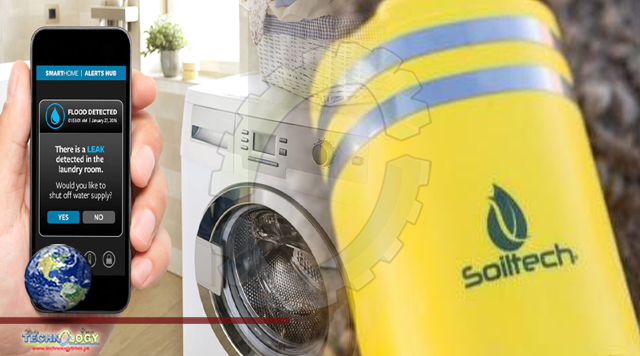SoilTech sensor technology precisely records and transmits data for soil moisture, temperature, humidity, location, and impacts that may create bruising across the lifecycle of a crop. AT&T’s LTE-M cellular network enables the device.

By Megan Schilling
SoilTech Wireless and AT&T partnered together during the 2020 growing season to measure the environmental and operational benefits of using SoilTech’s sensor across farms.
The results showed farmers could see a 4% increase in yield and across 10,000 acres of farmland, could save 500,000 million gallons of water and 250,000 gallons of gasoline.
SoilTech sensor technology precisely records and transmits data for soil moisture, temperature, humidity, location, and impacts that may create bruising across the lifecycle of a crop. AT&T’s LTE-M cellular network enables the device.
Monitoring these crop quality variables helps farmers increase yield. The data also provides near real-time actionable insights that allow farmers to decrease watering occasions and trips to the field.
“I’m encouraged that companies like SoilTech are using AT&T technology to help farmers improve agricultural yields as well as conserve water and reduce emissions in the process, John Schulz, Director of Sustainability Integration at AT&T, says.
Placing real farm challenges front and center was key to the sensor’s development process. “In talking with growers, almost every single one said water was the most important factor.
Not just in determining operational expenses, but quality, micronutrients, and other measurements,” Ehsan Soltan, founder and CEO of SoilTech Wireless, says.
Its ability to travel from soil to storage adds functionality and visibility across a whole farm and growing season – a perspective that other sensors lack. “Besides being a soil moisture monitor, it’s an all-crop monitor,” Luke Radford, agronomist at Moss Farms, says.
SoilTech technology can be used in a variety of crops: potatoes, corn, onions, sugar beets, sweet potatoes, hay, alfalfa, barley, beans, watermelon, and cotton.
“When I walk fields with a grower, one of the first things we do is pull up the soil sensor data,” Jared Cook, consultant for Fertilizer and Crop Protection at Rocky Mountain Agronomics, says.
“We look at the trend as we walk the crop. The fact that the data is real-time and can be pulled up as you look at the actual conditions helps us make better decisions about managing the crop.”
Originally published at Successful farming